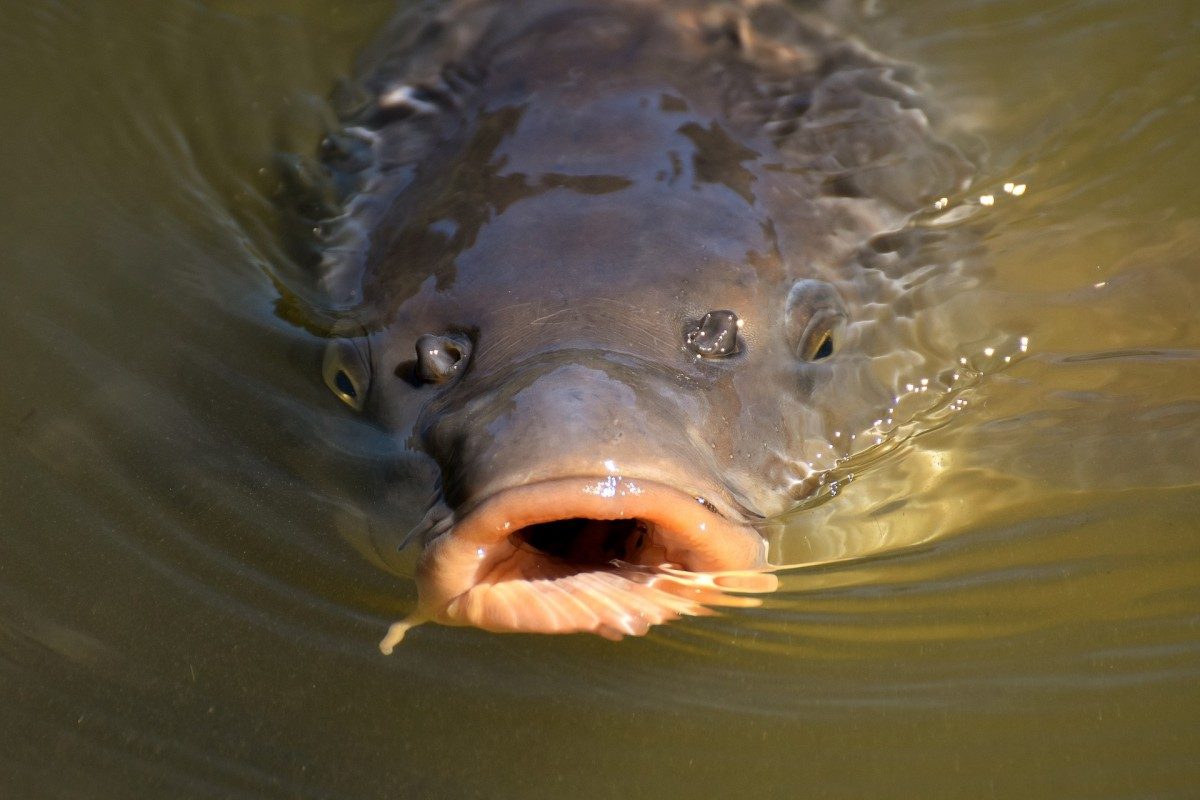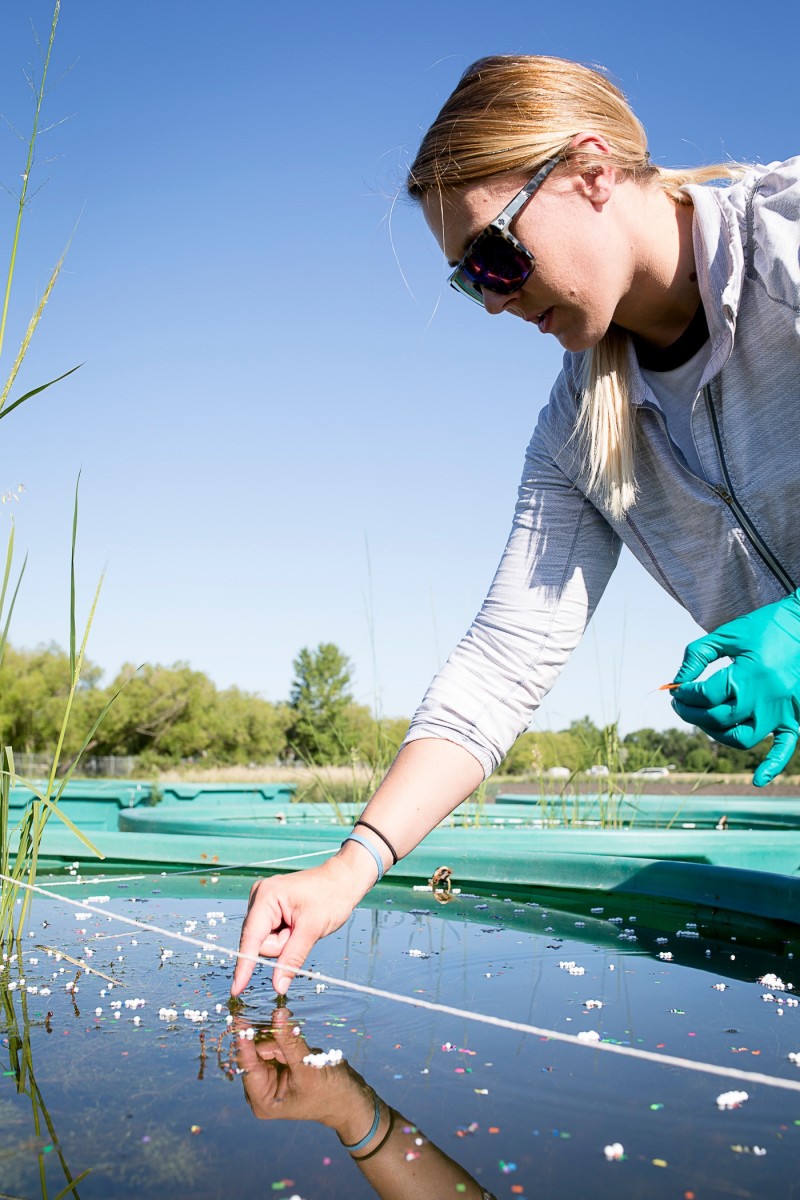
Carp and other fish in Lake Winnipeg may have ingested microplastic particles.
Microplastics found inside fish from Lake Winnipeg
A recent study by an undergraduate student in the Clayton H. Riddell Faculty of Environment, Earth, and Resources has found disturbing levels of microplastics in Manitoba waters and in fish from Lake Winnipeg.
Student Sarah Warrack, working with Dr. Mark Hanson in the department of environment and geography, and Dr. Michael Rennie, an adjunct professor in biological sciences, sampled rivers and lakes in Manitoba to see if microplastics, a growing concern in global pollution, have shown up here. She discovered that microplastic pollution in Lake Winnipeg is worse than that found in the Great Lakes, where such contaminants are of grave concern.
Microplastics are small plastic particles less than 5.0 mm in diameter that can enter the environment as tiny plastics like microbeads in toothpaste, scrubbers in cleaning products, or indirectly as larger plastic debris that fragment and degrade into smaller particles. Plastic particles not captured by wastewater treatment plants are eventually released, via effluent, into freshwater systems.
Microplastics have been found inside the bodies of fish, birds, and mammals, but the long-term impacts of such pollution are not well understood. Microplastics may pose a possible hazard to human health through human consumption of aquatic species that ingest plastic particles. Should we be worried?

Sarah Warrack studies micro plastic pollution in our environment (Credit: Whitney Light). Warrack is now pursuing a master’s degree in the environment and geography.
“Microplastics are everywhere, from dust particles to deep sediments in oceans,” says Warrack. “There is no compelling evidence at this time that microplastic particles are dangerous to organisms or humans. Typically, if microplastics are ingested, they pass through the digestive system as would any other solid material. This isn’t an excuse to ignore the problem; rather it speaks to our general disregard, at times, for what we are willing to release into the environment.”
Lake Winnipeg has a far greater density of microplastics than both Lake Superior and Lake Huron, and is comparable to that of Lake Erie, which supports more than ten times the population.
Warrack notes: “We are not entirely sure why the densities are greater here. It could be current patterns trapping plastics, residence time of the plastics through the lake, re-suspension of plastics from sediments, or a combination of all of these.”
Warrack sampled water in the Red, Assiniboine, and Nelson Rivers and collected fish from Selkirk Park. The highest concentration of microplastics in water was found in the Assiniboine River at The Forks in Winnipeg. Almost all carp had ingested microplastics and about half of the sauger collected. Carp had an average of seven microplastic particles whereas sauger had an average of one microplastic particle in their gastrointestinal tracts.
Warrack noted that the Red and Assiniboine rivers are contributing 400 million microplastics annually to Lake Winnipeg. There is an estimated 300,000 tonnes of plastic floating in the world’s oceans.
“A simple step everyone can take is to make sure we aren’t tossing plastics out into the environment. Basically, we need to stop littering.”
“This will be an issue that is around for some time simply due to how long it takes plastics to degrade,” she advises. “We can begin by reducing our plastic use, but we clearly depend on plastic as a society at this time. A simple step everyone can take is to make sure we aren’t tossing plastics out into the environment. Basically, we need to stop littering.”
But the issue of microplastics goes far beyond plastic bottles. Warrack says much of our clothing is made of synthetic fibres, and as we wash our clothing plastic fibres are shed.
“Using clothing made from natural fibres such as cotton, bamboo, and wool would mediate this problem,” she notes.
Warrack’s results were published in a recent issue of Proceedings Of Manitoba’s Undergraduate Science and Engineering Research (PMUSER), which highlights peer-reviewed research by undergraduate students in science or engineering. It was one of the first undergraduate research journals in Western Canada, preparing students for future careers in science/science-related fields. Warrack’s paper won the Best Paper Award, sponsored last year by the Faculty of Science.
Warrack is currently working on her master’s degree in the environment and geography. Her research involves using outdoor wetland mesocosms to understand microplastic behaviour, quantifying settling rates, and potential influence of biofilm formation on this process.
Research at the University of Manitoba is partially supported by funding from the Government of Canada Research Support Fund.







I read the whole report and the majority(over 80%) of the microplastics are fibres which are from washing clothes. Water treatment plants are also a major contributor to microplastics.
Yes common sense says not to throw plastics into the environment but wouldn’t the biggest bang for buck to reduce microplastics be found elsewhere? Would the government want to control the use of plastics in clothing????